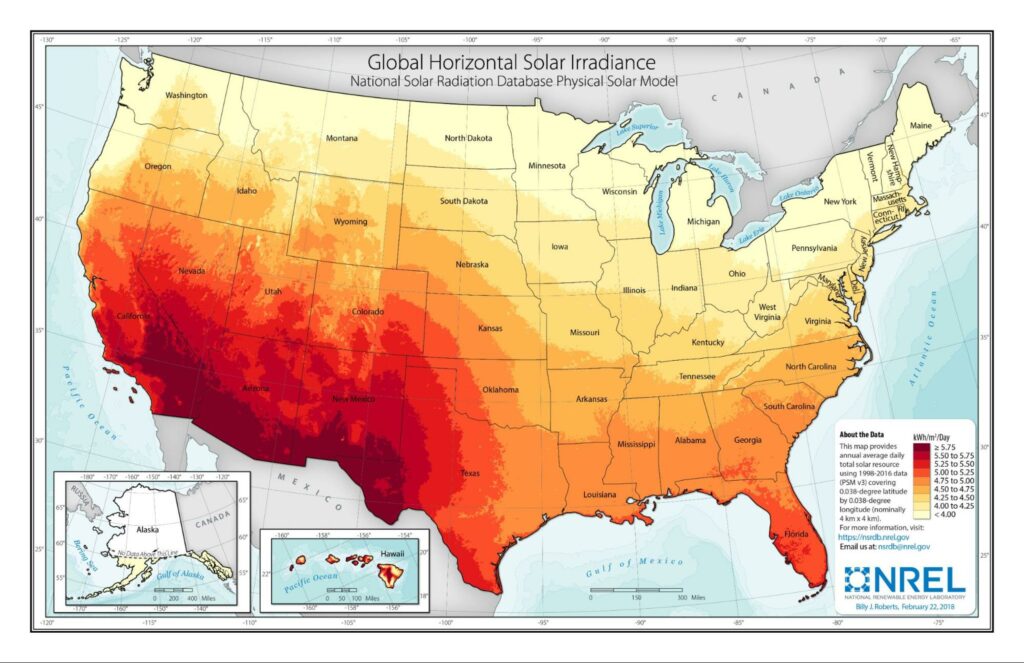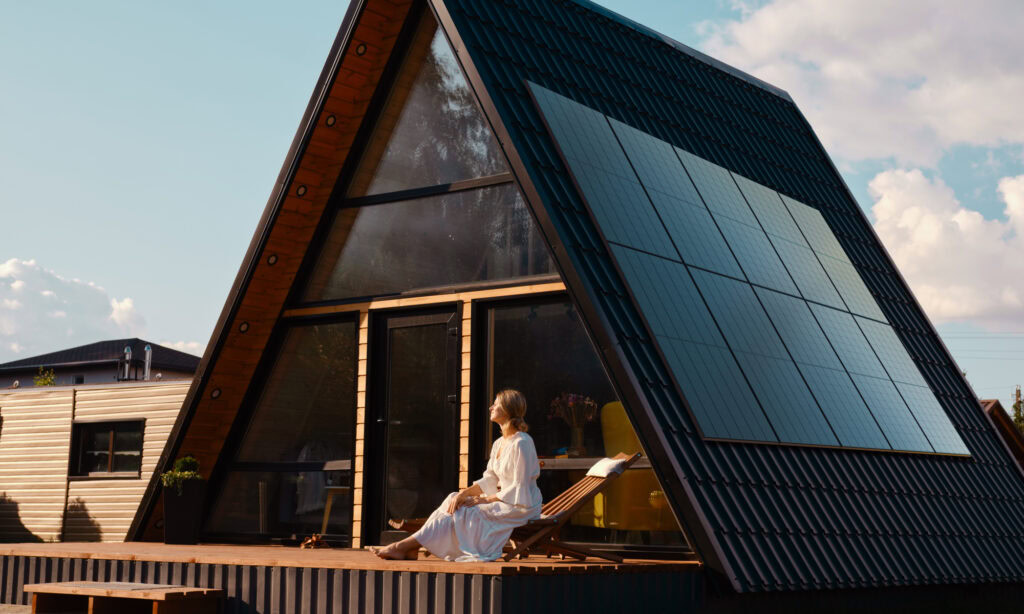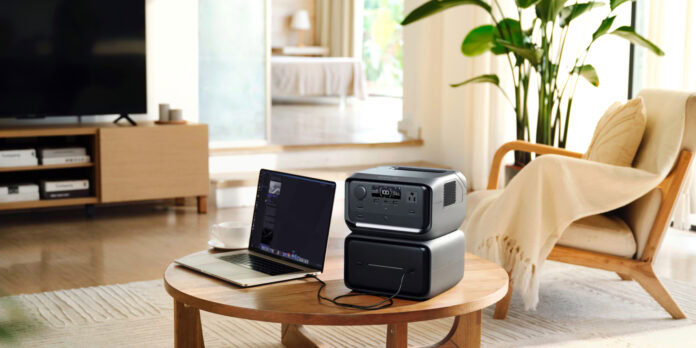Table of Contents
If you’re considering an investment in home solar power, you’re probably aware that photovoltaic (PV) modules like solar panels generate electricity from sunlight — not from heat.
Not surprisingly, direct sunlight is optimal for generating electricity with solar panels, but what about ambient, diffused, or indirect sunlight?
These distinct but related terms are often used in the photography and home lighting industries, but they also relate to solar energy systems and how much power they can produce under suboptimal conditions.
Read on to learn more about the different types of sunlight.
What Is Ambient Sunlight?
In film and photography, ambient light is also called available or practical light, and it refers to existing sources of indoor or outdoor light.
In photovoltaic applications, ambient sunlight is used to describe low-intensity sources of light, including:
- Sunlight obscured by clouds
- Moonlight
- Daylight before sunrise and sunset
- Artificial light — such as indoor lighting or outdoor light from street lamps and other sources
While it’s true that solar panels generate electricity from sunlight, it’s more accurate to say that photovoltaic cells produce direct current and voltage from electromagnetic radiation (EMR).
(Source: UCAR Center for Science Education)
EMR from the sun travels to the Earth in waves measured on the electromagnetic spectrum.
Electromagnetic radiation comes from many natural sources aside from our Sun and is frequently generated by humans for a wide variety of applications, including:
- X-ray machines
- Radio transmission
- Microwave ovens
The solar spectrum is more specific and comprises three different wavelengths.
- Ultraviolet (UV)
- Infrared (IR)
- Visible light
About 40% of the solar radiation that penetrates our atmosphere is visible sunlight.
As the name suggests, it’s the only type of electromagnetic radiation that we can see with the naked eye.
Conventional solar panels that use the photovoltaic effect to generate electricity do so almost exclusively from visible light.
The greater the intensity of the visible light, the more power a PV module will produce.
However, solar panels still generate electricity, even in ambient light.
Unfortunately, the wattage produced under low-light conditions — such as moonlight — is typically insufficient for practical use.
What Is Diffused Sunlight?
Diffused light is scattered by atmospheric conditions — like clouds or fog — or physical obstacles such as a dense forest or woods.
If you have curtains or blinds on your windows, you probably experience diffused visible light on a daily basis.
Sunlight filtered through overcast skies or other obstacles provides less solar energy, and PV modules will generate less than their full rated power wattage as long as such conditions persist.
The higher the efficiency rating of the PV modules, the more electricity they will generate from diffused sunlight.
More on solar panel efficiency below.
What is Indirect Sunlight?
Indirect sunlight is filtered or reflected through at least one medium before reaching the surface of a photovoltaic module.
Examples include dust clouds or the leaves of trees.
Indirect light is often preferable to direct sunlight for applications other than generating electricity.
For example, many houseplants thrive under indirect light, while direct sunlight may be too harsh.
Similarly, if you’re still using incandescent lightbulbs, you probably have some kind of shade to filter the light.
The amount of electricity a PV array can generate is reduced under indirect sunlight…
But by how much?
Do Solar Panels Require Direct Sunlight?
No, photovoltaic modules like solar panels generate electricity under various conditions, including ambient, diffuse, and indirect sunlight.
However, the total wattage a PV array generates is negatively impacted when sunlight is obstructed by conditions such as clouds or shade.
It’s essential to take atmospheric conditions at your location into account before purchasing a fixed PV module array, such as a rooftop installation with rigid solar panels.
A mistake first-time residential solar generator purchasers often make is assuming that solar panels generate their full rated power wattage during every daylight hour.
Many people don’t realize that rated power wattage is determined in a laboratory under Standard Test Conditions (STC).
Standard Test Conditions for Solar Panels
| Condition Type | Standard Test Condition | Real-World Conditions |
| Solar Incident Angle | Always zero, irradiation beam always normal to the PV panel* | Variable, and depends on time, date, and site latitude. In the case of rooftop systems, roof orientation, and inclination govern system capacity. |
| Solar Irradiation | Always equal to 1000 Watts/m²* | Variable and depends on the time, date, and site latitude. Limited sunshine hours bound system capacity. |
| Ambient Temperature | Always 25°C* | Variable and depends on the time, date, weather condition, and site latitude. Higher ambient temperature degrades PV panel efficiency and reduces system output. |
| Air Mass Coefficient (AM) | Always equal to 1.5* | Variable and depends on the time, date, and site latitude. Higher AM with higher latitudes. |
| System Losses (e.g., Wiring, Inverter) | Always Zero* | Variable and depends on the design and location of PV panels, inverter, and grid meter. |
*Cannot be achieved in real-world operation (Source: ResearchGate)
STCs are ideal conditions that rarely (if ever) occur in the real world.
That means each solar panel in your array will likely only ever generate its full rated power wattage during peak sunlight hours each day.
Average peak sun hours significantly vary by location.
For example, Arizona receives 7-8 hours daily, while New York gets 3 to 3 and a half.
All things being equal, a solar panel array will generate significantly more electricity in a location with more direct sunlight hours per day than in an area with less peak sunlight.
The National Renewable Energy Laboratory offers a free PVWatts calculator to help you estimate your electricity production based on your address and the details of your photovoltaic system.
Numerous other factors aside from location impact how much direct sunlight your PV array receives and/or how much electricity it can produce.
Here are the most essential things to consider when calculating solar panel output.

(Source: NREL)
Average Horizontal Solar Irradiance at Your Location
Global horizontal irradiance (GHI) is the most commonly used metric to estimate how much sunlight — and therefore electricity generation potential — you will receive based on location.
Measuring solar irradiation can also ensure the optimal installation of PV modules at any given location.
Solar Panel Efficiency
The “efficiency” of PV modules is a precise specification determined under the STCs outlined above.
Next to rated power, it’s arguably the most crucial spec to consider when shopping for rigid or portable solar panels.
Simply put, solar panel efficiency measures how much direct sunlight a PV module can convert to electricity per square meter of photovoltaic material.
The most efficient monocrystalline silicon PV modules that are commercially available offer a rating of about 23%.
Polycrystalline silicon modules are significantly less efficient (12%-18% rating) but also cheaper in price.
Efficiency is particularly critical to consider when installation space is at a premium, such as on a home rooftop.
The lower the efficiency rating, the more space you’ll need to generate the same amount of electricity.
Obstructions and Shade
Every effort should be made to ensure that solar panels are installed in a position free of regular shade from obstructions like trees and nearby buildings.
Frequently, complete avoidance of obstruction during daylight hours isn’t practical.
In such instances, every effort should be made to affix the PV modules in positions that receive direct sunlight during peak sun hours each day.
If shade is unavoidable, try to ensure it occurs early or late in the day when the sun isn’t as strong.
Series, Parallel, or Hybrid
You have three options when connecting solar panels to each other — series, parallel, or a hybrid of both.
Each has its benefits, depending on your application.
Learn more about wiring solar panels in series or parallel.
Direction, Positioning, Angle, and Tilt
Installing fixed PV modules like solar panels and shingles to optimize electricity generation potential is an art in itself.
Ground installations offer more flexibility, but most homeowners prefer to install solar panels on the roof.
The basics are easy.
In the Northern Hemisphere, solar panels should face south.
In the Southern Hemisphere — such as in Australia — they should face north.
Getting the angle and tilt right requires some sophisticated calculations, which is why many people choose to work with a professional installer.
It’s entirely possible to DIY install solar panels on your roof.
However, it’s safer to work with an experienced installer, and it may increase your return on investment in the long run.
Ambient Temperature
Contrary to popular belief, solar panel efficiency decreases in extreme heat.
Photovoltaic systems convert visible light to electricity — not infrared light or heat.
Many locations that may seem ideal — like solar farms in a desert — deploy cooling systems to maximize efficiency and electricity generation potential.
Returning to the Standard Test Conditions, notice that PV modules are rated in a lab with an ambient temperature of 25°C (77°C).
The good news is that efficiency only declines significantly in temperatures above 100°F (~38°C).
To be clear, there’s no such thing as TOO MUCH direct sunlight for photovoltaic systems.
In residential solar power systems, any decreased efficiency from high ambient temperatures will likely be more than made up for by additional generation from receiving more direct sunlight.
It also may surprise you that solar panels perform better in cold temperatures than in extreme heat.
Even snow — unless it’s an extremely heavy build-up after a blizzard — doesn’t significantly impact performance.
At worst, you may have to have your solar panels cleaned.
Frequently Asked Questions
Solar panels generate power by converting visible light into electricity using the photovoltaic effect. Conventional crystalline silicon solar panels can produce electricity from ambient light. Low-light sources, like indoor lighting or moonlight, generate insufficient power for most applications. However, indirect or diffuse sunlight due to shade or cloudy days generates significant wattage.
Solar panels generate DC electricity from visible light using the photovoltaic effect. Sunlight is the ideal light source, but even ambient light produces electricity. However, low-light sources like indoor lighting or moonlight won’t generate sufficient wattage for many applications. Solar-powered LCD calculators are a common example of a low-wattage application that runs on ambient light.

Final Thoughts
Research is ongoing on photovoltaic cells that make more efficient use of ambient light — such as indoor fluorescent lighting or streetlights — for low-wattage applications.
An everyday example of low-wattage photovoltaic technology you may have on your desk right now is a dual “solar” + battery LCD calculator.
There’s significant potential for Internet of Things (IoT) and smart devices to operate using ambient light alone.
For portable and residential applications, high-efficiency PV modules—like EcoFlow’s rigid solar panels—maximize available sunlight, whether ambient, diffused, indirect, or direct.
Check out our selection today.
